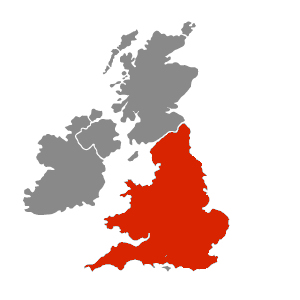Choose an Area



England & Wales Scotland Northern Ireland
England and Wales Planning Rules
 Under the current planning rules a conservatory is considered to be a temporary structure and allowable under permitted development, which means you will not need to apply for planning permission as long as the following rules are satisfied
Under the current planning rules a conservatory is considered to be a temporary structure and allowable under permitted development, which means you will not need to apply for planning permission as long as the following rules are satisfied
- No more than half the area of land around the "original house"* would be covered by additions or other buildings.
- No extension forward of the principal elevation or side elevation fronting a highway.
- No extension to be higher than the highest part of the roof.
- Maximum depth of a single-storey rear extension of three metres for an attached house and four metres for a detached house.
- Maximum height of a single-storey rear extension of four metres.
- Maximum depth of a rear extension of more than one storey of three metres including ground floor.
- Maximum eaves height of an extension within two metres of the boundary of three metres.
- Maximum eaves and ridge height of extension no higher than existing house.
- Side extensions to be single storey with maximum height of four metres and width no more than half that of the original house.
- Roof pitch of extensions higher than one storey to match existing house.
- No verandah, balconies or raised platforms.
- On designated land* no permitted development for rear extensions of more than one storey; no cladding of the exterior; no side extensions.
Where work is proposed to a listed building, listed building consent may be required.
- The term "original house" means the house as it was first built or as it stood on 1 July 1948 (if it was built before that date). Although you may not have built an extension to the house, a previous owner may have done so.
- Designated land includes national parks and the Broads, Areas of Outstanding Natural Beauty, conservation areas and World Heritage Sites.
Building Regulations
 Your new conservatory may not need planning permission, but it may need approval from the local building control just as an extension does. This is not a request for permission to build but a set of guidelines to make sure the structure is safe and meets current building codes. Below is a list of conditions that need to be satisfied to avoid building regulations.
Your new conservatory may not need planning permission, but it may need approval from the local building control just as an extension does. This is not a request for permission to build but a set of guidelines to make sure the structure is safe and meets current building codes. Below is a list of conditions that need to be satisfied to avoid building regulations.
- They are built at ground level and are less than 30 square metres in floor area
- At least half of the new wall and three quarters of the roof is either glazed or translucent material
- The conservatory is separated from the house by external quality door(s).
- Glazing and any fixed electrical installations comply with the applicable building regulations requirements
You are advised not to construct conservatories where they will restrict ladder access to windows serving rooms in roof or loft conversions, particularly if any of the windows are intended to help escape or rescue if there is a fire.
Opening between the house and conservatory
If you are thinking of opening up the consory to the existing house you will need a building control certificate and be governed by strict U-values, however a set of doors weather they are open all the time or not gets around this problem. However any new structural opening will need a lintel and therefor you will need to contact the building control
Planning Rules in Scotland
Planning Rules in Northern Ireland










 Under the current planning rules a conservatory is considered to be a temporary structure and allowable under permitted development, which means you will not need to apply for planning permission as long as the following rules are satisfied
Under the current planning rules a conservatory is considered to be a temporary structure and allowable under permitted development, which means you will not need to apply for planning permission as long as the following rules are satisfied
 Your new conservatory may not need planning permission, but it may need approval from the local building control just as an extension does. This is not a request for permission to build but a set of guidelines to make sure the structure is safe and meets current building codes. Below is a list of conditions that need to be satisfied to avoid building regulations.
Your new conservatory may not need planning permission, but it may need approval from the local building control just as an extension does. This is not a request for permission to build but a set of guidelines to make sure the structure is safe and meets current building codes. Below is a list of conditions that need to be satisfied to avoid building regulations.


